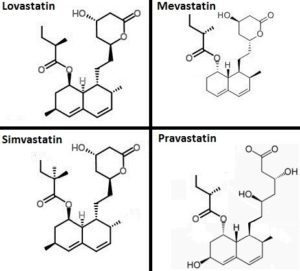In statistics there is something called RELATIVE risk reduction and ABSOLUTE risk reduction when predicting effectiveness of drugs or medical procedures.
A study of 150 gynecologists found 1/3rd did NOT understand the meaning of 25% relative risk reduction in breast cancer by having mammography. Most believed 250 in 1000 were saved from breast cancer – the actual amount is 1 in a 1000 because the 25% risk quoted was relative risk – not absolute risk reduction.
The difference between relative risk reduction and absolute risk reduction
 Published literature tells us if you take 10mg Atorvastatin for 4 years you have 48% relative risk reduction of having a stroke. Impressive. What does this actually mean? It means you reduce chance of having stroke from in 28 in 1000 – to 15 in 1000 which a 1.3% absolute reduction. So in real terms (what the patient should be told) it means there’s a 1 in 77 chance it will prevent you having a stroke.
Published literature tells us if you take 10mg Atorvastatin for 4 years you have 48% relative risk reduction of having a stroke. Impressive. What does this actually mean? It means you reduce chance of having stroke from in 28 in 1000 – to 15 in 1000 which a 1.3% absolute reduction. So in real terms (what the patient should be told) it means there’s a 1 in 77 chance it will prevent you having a stroke.
Guess which % risk reduction format the drug companies (who carry out secret testing and do not make the tests available – you sometimes have to go to court) tell the GPs to quote? Relative risk of course. It’s why they insist you will die if you don’t take it. GPs are incentivised to give you statins.
“NHS bosses currently offer GP practices financial incentives to boost the rate of patients handed the cholesterol-lowering medication.”
This has to be a joke right? Apparently the geniuses at the NHS actually do this. In my opinion this is absolutely disgusting regardless of wether a drug or procedure is effective or not. OF COURSE you will introduce corruption and unnecessary pushing of drugs or procedure onto patients by unscrupulous people – we all know the LOVE of money IS the root of all evil, but it seems the leaders of some medical institutions do not.
What about stents?..
[*Allegedly* for any lawyers out there – though I have no reason to doubt this fellow] From the doctor in the video (we must be very cautious about what we believe on YouTube as there are almost as many cowboys as there are in the Phrama industry) there is NO benefit having a stent for stable heart disease – only heart attack suffers. This is not what we are told because doctors quote relative stats – he tells us. Now this – bearing in mind the mind-numbing amounts of $$$ involved is extremely likely – knowing what I do about human nature regardless of physiology – I’d say it has a 99% absolute chance of being true!
How risk is calculated?
- AR (absolute risk) = the number of events (good or bad) in treated or control groups, divided by the number of people in that group.
- ARC = the AR of events in the control group.
- ART = the AR of events in the treatment group.
- ARR (absolute risk reduction) = ARC – ART.
- RR (relative risk) = ART / ARC.

I love God, Christ, The Bible. art, painting, playing music, improvising music, guitar (first instrument), drumming (not very good at it:), and anything musical or art related. Quick note – my articles are usually spun off in minutes so forgive any errors – hopefully you get the essence of the article and I’ll pick up mistakes later. If you want to write of 101ChristianMagazine and inspire and edify Christians with articles on faith, general news, hobbies or anything that interests you email me at: epgb101@gmail.com:)








